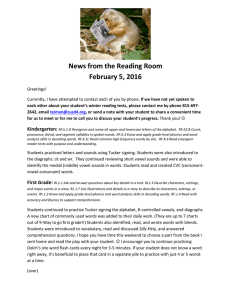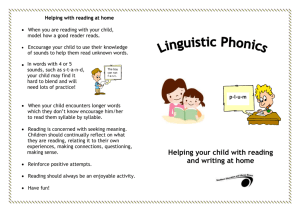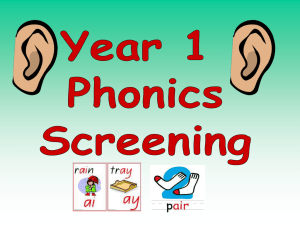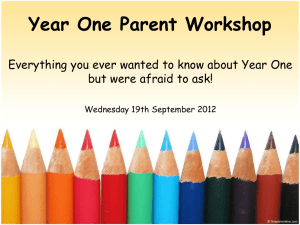HEC Reading Horizons
advertisement
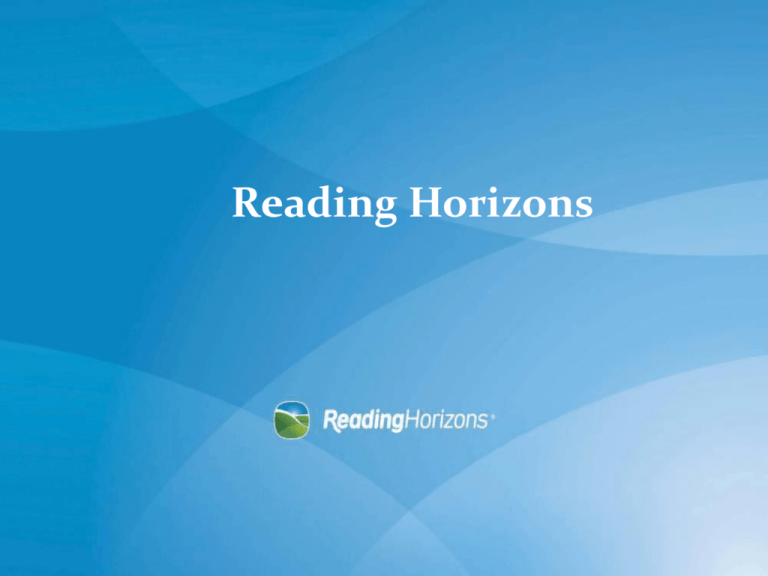
Reading Horizons Learner’s Brain-Mind Learner’s Brain/Mind 7 out of 10 students will learn to read regardless of the teaching method employed. 3 will NOT! What About the 30%? 5 Consistent Pattern 4 3 Grade Level 2 1 0 Dr. Jeanne Chall, Harvard University What We Do We teach to the 30%, but reach 100% Reasons for Reading Issues: • Students can struggle with reading due to gaps in education. • ELL students with little understanding of the structure of the English language. • Up to 80% of those with learning disabilities have a processing disorder that will affect their reading and language processing abilities (Hoover, 2002). • Most lack a solid foundation in phonemic awareness and explicit, phonics instruction. The Difficulty for ESL Readers The dag writox is smowk and spi. Runchet is shonsig, but Thift and Fenel are woagly skeag. Phin can wrozz and Bappet can vox, but Phin can’t shass. Bappet will densing and runchet in the mirrunsic blage. Language Processing Disorders Yale Study with Magnetic Resonance Imaging (MRI) 61 Students: 29 Dyslexic Primary visual cortex Inferior frontal gyrus Visual perception Angural gyrus Unimpaired Student Superior temporal gyrus Inferior frontal gyrus Dyslexic Student Visual perception (Attempts to convert visual information into sounds) Research Shows: Dyslexic students “can learn these relationships with intensive phonics training. . . After more than a century of frustration, it has now been shown that the brain can be rewired.” Dr. Sally Shaywitz What Does This Mean? So What Do We Do? • We teach the way the research has shown to be the most effective type of instruction. • We teach to the way our students’ brains learn. • We empower teachers with skills and strategies so that they can empower our students! Phonics should be taught: 1. Explicit and sequential 2. Constant reinforcement 3. Use a program that moves quickly! 4. Multi-sensory 5. Employs a marking system Dr. Leon Whitsell, International Dyslexia Association. Framework 42 Sounds 5 Phonetic Skills 2 Decoding Skills Consonants & Vowels Bb Ff Dd Gg Aa Hh Jj Ll Mm Ee Ss Oo Nn Pp Rr Tt Vv Ww Xx Yy Uu Zz Qq Cc Kk Ii Beginning Words bag dad gab fad X X X X Most Common Words Most Common Words the, a, an, I, it, is, this, through, etc. Sentence Structure C / K Rule How do you know when to spell with a C and when to spell with a K? C / K Rule can X cot X cop X cup X kit X kid X keg X Ken X Five Phonetic Skills * met * * jump me smile X X X X boat X X X Decoding Skill #1 motel Decoding Skill #1 3. mote X X 1. moX * 2. mot X 4. motel X X Decoding Skill #1 motel X X One consonant (guardian) goes on Decoding Skill #2 campus X X Two consonants (guardians) split Complete the 42 Sounds Murmur Diphthongs Digraphs Final Sounds of the 42 Sounds Special Vowel Sounds Framework Applied chapter X X athlete X X X August X X author X X powder X X X import X Every Student Can Read! • If students are taught phonics explicitly, sequentially, and systematically they can become automatic readers. Once we point out the systematic framework of our language, they can’t help but see it! • If we teach to the way our students learn, they can be successful. • We can empower our teachers with evidencebased and time-tested strategies that can change our students’ lives forever. Can You See the Arrow? Can You See the Arrow? Teacher’s Instruction Teacher’s Instruction • Train teachers in explicit phonics instruction, vocabulary instruction and how to address ELL’s and struggling reader’s specific needs. • Continue to support and increase teacher knowledge and skill set for fidelity of implementation and program success. • Provide training that will make all of your teachers reading specialists and dramatically change your school’s/district’s reading culture. Professional Development Instructional Materials: Tools & Curriculum Instructional Materials, Tools & Curriculum English as a Second Language Instruction Aids Computer Component English as a Second Language Instructional Aids Vocabulary Library Ensured Success
